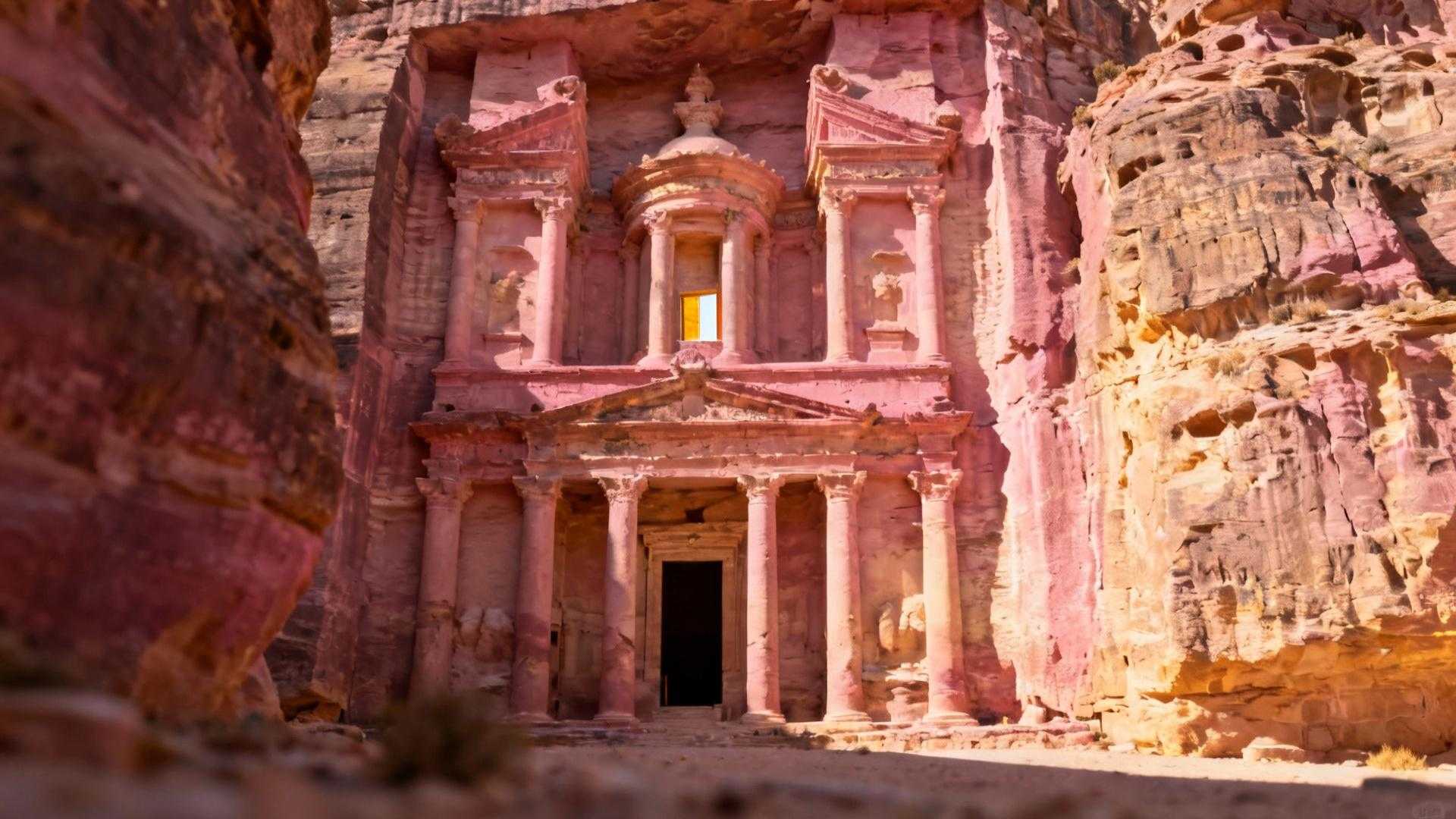Hidden deep in Jordan’s southern desert, Petra stands as the only ancient city where 30,000 people carved their entire civilization into rose-colored sandstone cliffs. While other civilizations built temples or tombs in rock, the Nabataeans created something unprecedented: a complete urban metropolis where tens of thousands lived, worked, and thrived within carved facades reaching 130 feet high.
Walking through the narrow Siq canyon that conceals Petra’s entrance, you’re following the same path that once welcomed caravans carrying frankincense and silk. The 1.2-kilometer winding passage suddenly opens to reveal the Treasury’s rose-pink facade, but this famous monument represents just 15% of an archaeological wonder that redefined desert urban planning.
What makes Petra unique isn’t just its beauty—it’s the revolutionary engineering that sustained massive population density in one of the world’s harshest environments. No other ancient city achieved this scale of rock-carved urban living combined with sophisticated water management systems.
The engineering marvel that defied desert limitations
Water systems that sustained 30,000 desert dwellers
The Nabataeans developed hydraulic technology unmatched in the ancient world, carving hundreds of massive cisterns directly into solid rock. Some cisterns were large enough to hold small buildings, collecting and storing precious winter rains through gravity-fed networks of channels carved through solid stone. This system was so advanced that many cisterns still serve local Bedouin communities today.
Terraced urban planning in vertical rock faces
Where natural bedrock was absent, Nabataean architects created artificial terraces and sculpted the landscape into a tri-tiered urban design. They carved luxurious Roman-style villas, enormous temple complexes, and sophisticated facilities including marble-lined spas with lead pipes—all integrated seamlessly into the living rock.
The scale that transforms understanding of ancient cities
Population density that rivals modern urban centers
Archaeological evidence reveals Petra supported up to 40,000 inhabitants at its peak, creating population density comparable to medieval European cities. Residents cultivated wheat, made wine, and strolled through gardens sustained by the ingenious water systems—luxury that seems impossible in a desert environment receiving only 6 inches of annual rain.
Commercial sophistication beyond carved monuments
For nearly 1,000 years, Petra functioned as the Middle East’s premier trading emporium, attracting caravans traveling between Egypt, Arabia, and the Levant. The city featured lush fountains, tall shade trees, and agricultural areas that supported this thriving metropolitan center—evidence that challenges every assumption about ancient desert life.
The authentic experience only 15% exploration reveals
Hidden chambers and unexplored urban districts
Modern archaeology using Ground Penetrating Radar and GIS mapping confirms that 85% of Petra remains unexplored beneath desert sands. Recent discoveries include vast residential districts, additional temples, and sophisticated infrastructure that suggests the city was even larger and more complex than currently visible to visitors.
Living culture connecting ancient and modern Bedouins
Local Bedouin guides, descendants of communities that maintained connections to Petra for over 1,000 years, share oral traditions that complement archaeological discoveries. Their storytelling reveals cultural continuity that transforms Petra from ancient ruins into a living heritage site. Like archaeological discoveries that revolutionized our understanding of Arthurian legends, Petra continues revealing secrets that reshape ancient history.
Why this matters for today’s conscious travelers
Conservation challenges requiring visitor awareness
Tourism provides essential income for local Bedouin communities, but cultural preservation remains paramount. Recent conservation efforts limit access to fragile areas while developing sustainable tourism infrastructure that protects both the site and traditional lifestyles. Just as French artisans preserve culinary traditions, Jordan’s Bedouin communities maintain 2,000-year-old cultural connections to Petra.
Access that respects authentic cultural heritage
The optimal visiting season runs March through May and September through November, when moderate temperatures allow full exploration without overwhelming summer heat. Licensed Bedouin guides offer authentic perspectives that transform tourism into cultural education. Different from underground mining experiences, Petra demonstrates ancient engineering that created livable urban spaces within natural rock formations.
Planning your authentic Petra discovery
What makes Petra worth the journey from anywhere
Queen Alia International Airport in Amman connects Petra to global destinations, with typical flight times of 16-20 hours from the US, 5-6 hours from the UK, and 20+ hours from Australia including connections. Jordan Pass options include entry fees and often provide better value than individual tickets.
Cultural preparation for respectful exploration
Conservative dress shows respect for local customs, while learning basic Arabic greetings enhances interactions with Bedouin guides. Most locals speak English in tourism areas, but cultural sensitivity regarding photography and sacred spaces creates more meaningful connections with this living heritage site.
What to expect beyond the famous Treasury facade
Plan minimum two full days to appreciate Petra’s scale properly. The Monastery hike, Royal Tombs exploration, and Little Petra visit reveal the city’s full complexity. Early morning and late afternoon provide optimal lighting for photography while avoiding midday heat that can reach 100°F in summer months.
Petra remains the only place on Earth where you can walk through streets where 30,000 people once lived entirely within carved rock faces. This isn’t just archaeological tourism—it’s experiencing human ingenuity that sustained urban civilization in impossible conditions. The rose-colored city continues revealing secrets that transform our understanding of what ancient peoples could achieve when they refused to accept environmental limitations.
